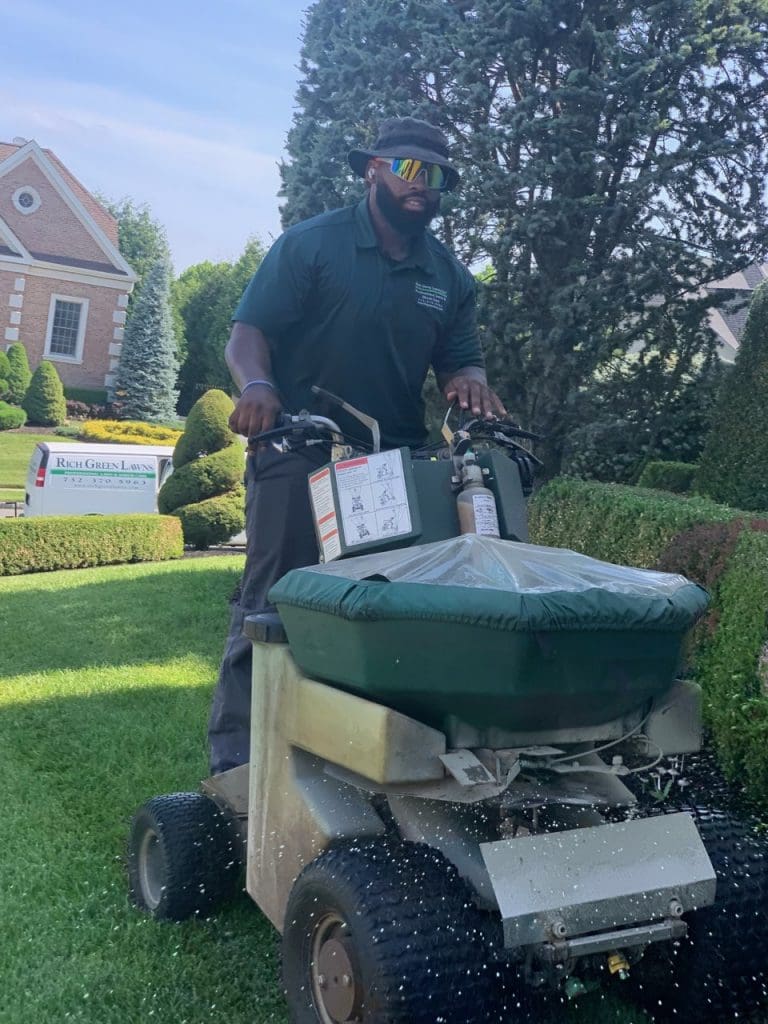
Route density is definitely something lawn care and landscape maintenance company owners should work towards as the less your crews have to drive, the lower the cost is for you to maintain a property. The lawn and landscape industry is a competitive business so improving your route density can give you an edge.
If your people are stuck behind the wheel, they’re not working and generating good revenue. The question is how do you achieve that density? There’s no one right way to go about building route density, there are but multiple options to use. Below are some of the best practices that various companies in the lawn and landscape industry use.
Create Customer Criteria
Route density isn’t just about servicing a number of properties that are close to each other. It’s about servicing the right properties for your company.
“When you get an opportunity to bid a property, you got to be careful not to chase the wrong properties, the ones that are maybe too far away, or be able to manage how you’re going after them and promoting yourself,” says Bob Grover, LIC, president of Pacific Landscape Management in Portland, Oregon. “Managing and understanding where your properties are and where your prospects are is an interesting and unique challenge.”
Grover says they work diligently to create a prospecting list that highlights good properties and bad properties. They rate properties by A, B and C, based on their closeness, type of property, who owns it and who manages it.
Pacific Landscape Management focuses on serving larger, more sophisticated properties. Grover says if it’s not already being maintained, oftentimes that’s because the customer doesn’t want to spend a lot of money or doesn’t think the landscape adds value to the property.
He says they also prefer to work with properties that are professionally managed. They do best with properties run by property management firms or facility managers. Grover says you need to focus on recruiting your A and B properties and avoid the Cs.
Adam Jackson, owner of Nature’s Turf, based in Fayetteville, Georgia, advises others to focus on a single area at first and not get spread out too much by refusing to turn away any business.
“It takes a lot more time and a lot more money to build these routes than you think when you first get going in a business like this,” Jackson says. “So we ended up shrinking our service area almost every year for the last 10 years.”
Stay Top of Mind
One way to help with route density is to stay top of mind in your desired client’s head when they starting thinking of a lawn care or landscape maintenance company.

“When they’re ready to buy, we want them to call, as opposed to going out there and saying we’re ready to sell,” Grover says. “You know, the ‘what can I do to put your car today?’ That’s not a good strategy for finding good future customers. You want to find them when they’re ready to buy, not when we’re ready to sell.”
Pacific Landscape Management makes daily posts on social media so their name is in front of people and they add property managers of prospect properties to their weekly newsletter mailing list. The newsletter serves as a touchpoint and promotes their skill and expertise.
“One of the best practices when it comes to route density is a multi-step targeted plan that puts our name in front of the consumer multiple times when we are scheduled to be in their neighborhood,” says Eric Lehmann, business operations manager for Rich Green Lawns LLC, based in Jackson, New Jersey.
Lehmann says they also send direct mailers to residences who are near a current Rich Green Lawns client.
“We also include our best offer of the season,” Lehmann says. “We have found that clean and concise mailers of all kinds still have a place in our digital society.”
Rich Green Lawns will reach out a few times a year to keep their name relevant so if a client is looking for a change, they’ll reconsider the offer. Jackson says they focus on digital marketing exclusively and use platforms like Google, Facebook and Instagram to target their ideal client.
“We feel like clients who are shopping digitally are going to fit in with what we’re trying to do here better,” Jackson says. “We want to start them digitally and then manage that account digitally as well. We feel like the ROI is better on digital marketing than print.”
Rich Green Lawns also considers community engagement as a way to help build route density.
“We work and live in many of the communities we service,” Lehmann says. “It is important for us to be proud of the work we produce so we can connect to our neighbors and other community members. Being involved in the school community and athletic events helps build brand cognition and credibility, further helping to build a denser route.”
Develop Tighter Routes

Once you have some existing routes, don’t assume they’re as efficient as they can be. It can even be as simple as using Google Maps to calculate travel times between addresses.
Grover says they also use this to determine if they need to open up a new branch location and to determine the location of the new branch. They’ve also used Google Maps to see nearby properties that they’d like to add to their routes.
Lehmann says they use their CRM to build tight and efficient routes that reduce windshield time. Jackson uses RealGreen’s routing software to help create effective routes. Aside from that, he has two people on their routing team who ‘massage’ the route to ensure lawns are getting treated in the proper window of time.
Do Good Work
At the end of the day, Jackson says it should really come down to the quality of your work and it should sell itself. Jackson says they believe in investing in their fleet and make the lawn look good. They provide khaki pants for their technicians and ask that they tuck their shirts in. He says they get lots of compliments for little things like that.
“If you do good work, and you have good equipment, and you have a clean vehicle, and you have a professional technician, then people see that,” Jackson says.
He says that referrals, people seeing their trucks or their lawn signs are a significant source of their sales.

